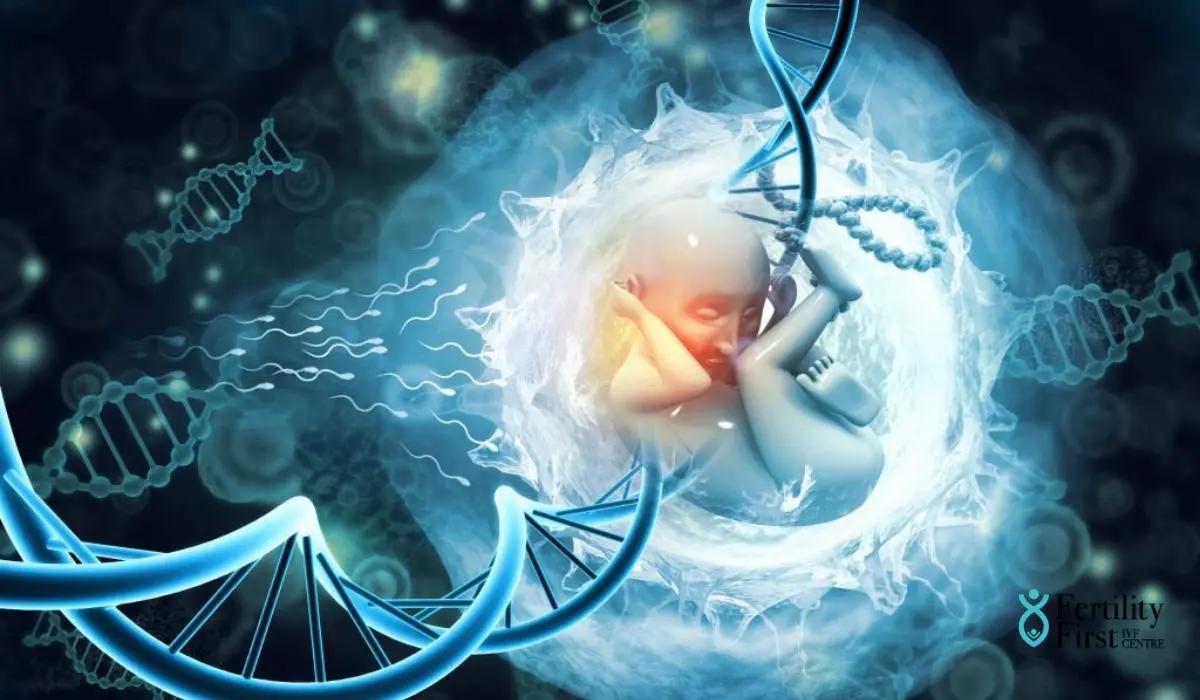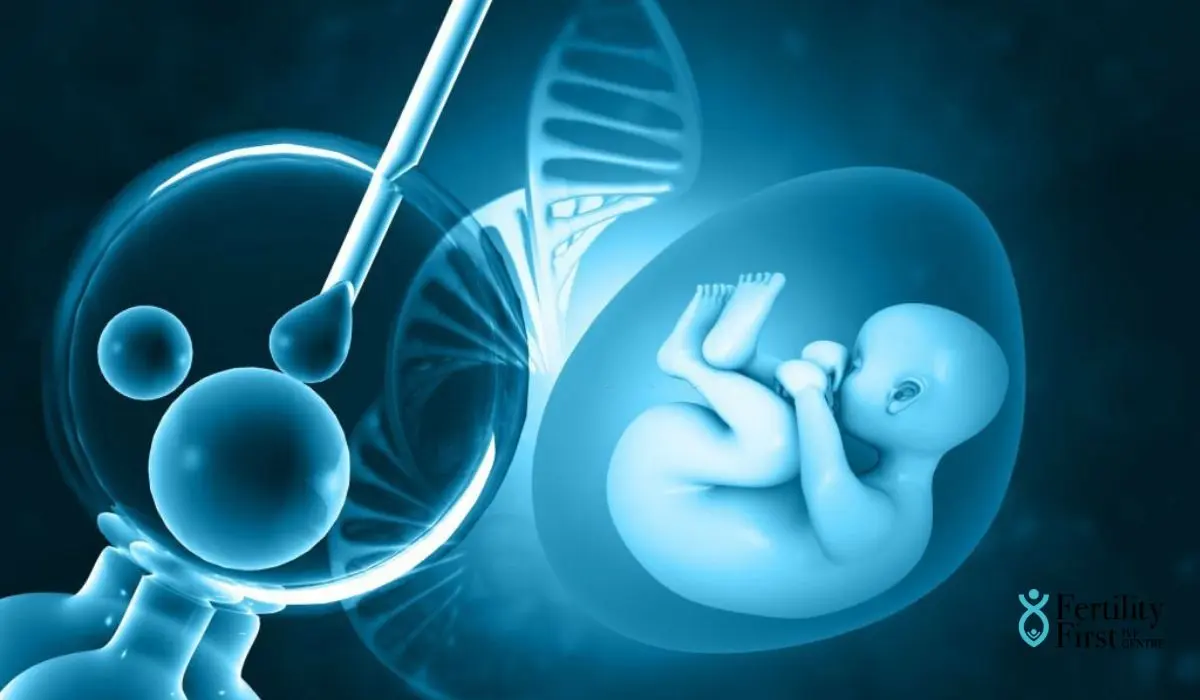What Is Embryo Transfer?Procedure, Success, And More

If you are familiar with in vitro fertilization (IVF) the word embryo transfer will sound familiar. Embryo transfer is a procedure involved in IVF treatment. It is a crucial step in assisted reproductive technology. Let’s explore more about this fascinating process.
Embryo Transfer
Embryo transfer is a vital procedure associated with assisted reproductive technology also known as ART. A skilled embryologist will carefully nurture and select quality embryos for the procedure. After the selection, your doctor will transform the promising embryo into the welcoming environment of the uterus. Embryo transfer is the final step of IVF. There are a few crucial steps involved in the procedure, let’s have a look at all of them one by one.

1.1. Preparation
Embryo transfer is the final step. A recipient needs to undergo various procedures prior to that. Preparation is the initial step. The recipient of the embryo needs to undergo several medical screenings to rule out the complications. The doctor will suggest these medical evaluations to detect the presence of any potential infections as well. Once the mandatory medical tests are over, if necessary, a controlled ovarian stimulation process will be performed to retrieve eggs. But if the recipient or the intended parent opts for using a donor embryo, repetition of ovarian stimulation is not needed. Your doctor will focus on ensuring your uterus will be ready to accept the new embryo.
1.2. Developing Embryo
Embryo development is the next stage in the procedure. After fertilization, the eggs or the embryos will get cultured in the laboratory for a few days. Typically, it will take three to six days to culture after fertilization. During this time, the embryos will develop and reach a suitable stage for transfer.
1.3. Embryo Selection
In this third stage, the embryologists will closely monitor the developing embryos and select the most suitable and promising embryos. An embryologist determines the quality of the embryos based on specific criteria, such as cell division rate, morphology, and genetic testing. Embryo selection is crucial, if anything goes wrong, the chance of pregnancy will decline. Only a skilled embryologist can effectively conduct the embryo selection procedure. A nicely done embryo selection will increase the chances of a successful pregnancy.
1.4. Uterine Preparation
To receive the transferring embryo, the recipient’s uterus should have a welcoming environment for the embryo. Preparation of the uterus is essential. Hormonal medications will be used at this stage. So that the uterus will have the optimal environment for embryo implantation.
1.5. Embryo Transfer
Embryo transfer is the final procedure. The process of implantation is similar to a Pap smear. It is a less invasive procedure that involves following steps
- As the first step, the doctor will insert the speculum into the vagina to visualize the cervix.
- A thin flexible catheter will be inserted into the womb through the cervix.
- Then, your doctor will carefully pass the embryo into the womb using a tube.
- After releasing the embryo into the uterus, the doctor will slowly withdraw the catheter, and the process is complete.
1.6. Post-Implantation Care
After the successful implantation, the recipient should rest briefly. The patient will be observed for a short period in the clinic. In some cases, your doctor may advise you to take bed rest for some time.
1.7. Waiting Period
Your doctor will recommend a two-week waiting period after embryo transfer. This period is very critical. It will take two weeks for an embryo to implant in the uterine lining.
1.8. Pregnancy Testing
After the waiting period, it is time for the pregnancy test. It is the last stage, where you can find out the final result of your implantation. A blood test or a urine test can confirm if the implantation was successful or not. A positive result indicates the pregnancy.
The Risks Involved in Embryo Implant
The risk involved in the procedure of embryo transfer is significantly low. However, like any other medical procedure, embryo implantation also has moderate risk elements. Some of them include,
- Formation of blood clots due to increased hormonal stimulation. It can lead to the blockage of blood vessels.
- Irregular bleeding
- Abnormal vaginal discharge
- Infections
- Multiple pregnancies
- Miscarriages
- A chance of stillbirth due to multiple transfer of embryos.
Factors that Affect the Successful Implantation Of The Embryo
Many factors can affect the success of embryo transfer. Some of the common factors include,
- The technique used by the fertility clinic or the doctor.
- The skill and experience of the embryologist
- Quality of the embryo
- The state of endometrium
- Poor handling of the embryos during the embryo transfer procedure.
- Not following post-embryo transfer care
Types of Embryo Transfer
There are a few types of embryo transfer techniques. A doctor may recommend the type of embryo transfer after a careful evaluation of the recipient’s health. The common types of embryo transfer include
4.1. Fresh Embryo Transfer
Your doctor may suggest a fresh embryo transfer if you are under the age of 40. The procedure involves transferring embryos that have been fertilized, within a few days before the implantation procedure.
4.2. Fresh Blastocyst Embryo Transfer
Fresh blastocyst transfer has a higher chance of pregnancy. Your doctor may opt for blastocyst embryo transfer when multiple promising embryos develop after fertilization. If this happens it is better to wait further, typically for a few days, to ensure that the viable embryos grow into blastocyst. Blastocysts are a ball of cell that forms in the early stage of pregnancy.
4.3. Frozen Embryo Transfer
After the fertilization process, there is a chance for the development of multiple healthy embryos. The unused good-quality embryos will be frozen and stored in a laboratory for future use. The frozen embryos can be used for second-time embryo transfer. Therefore, repetiting the ovarian stimulation process can be avoided.
Conclusion
Embryo transfer is a remarkable and hopeful step in the journey toward parenthood. It is the final stage of the IVF process. Various procedures lead to embryo transfer. A recipient needs to follow the doctor’s post-transfer instructions carefully. Several factors can influence the success of the implantation. Your doctor will decide what type of implantation is best for you.
